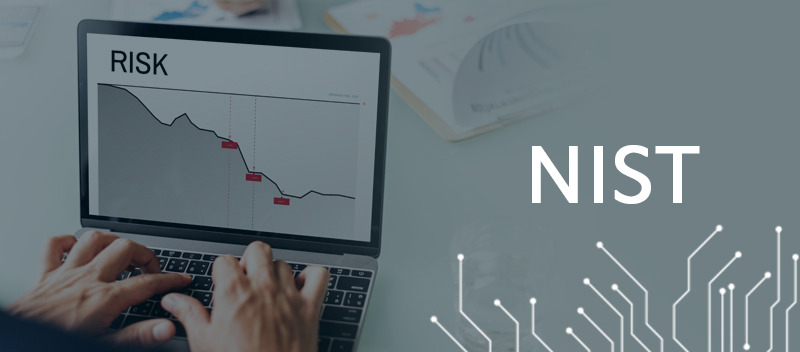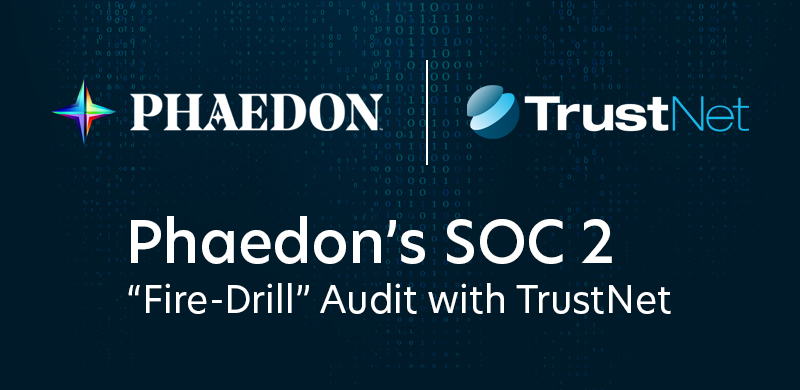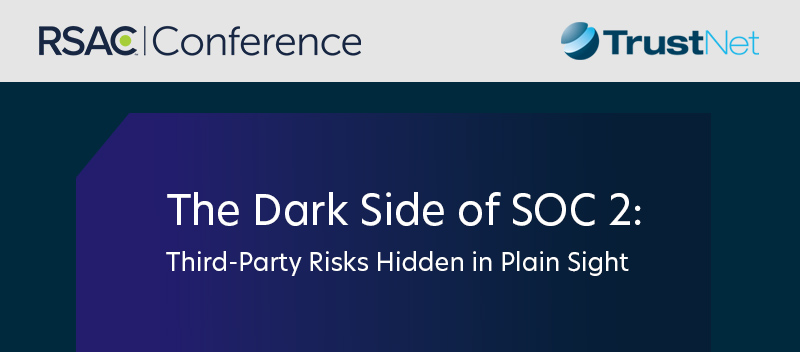The NIST Cyber Risk Scoring Advantage: How to Fortify Your Cyber Risk Management

61% of Americans report having experienced a cyber security event, such as a data breach. For 44% of those people, it has happened more than once. As a result, many people are concerned about the safety of the data they share with organizations and businesses with whom they do business. That’s where NIST scoring comes into play.
But what exactly is NIST scoring, and why is this important for you? NIST scoring gives you an accurate view of your security framework’s state and areas needing development. It allows you to prioritize actions, allocate resources efficiently, and, ultimately, strengthen your defenses against cyber threats.
Understanding the NIST CSF
Understanding the intricacies of the National Institute of Standards and Technology (NIST) Cybersecurity Framework (CSF) can be a game-changer.
What is the NIST Cybersecurity Framework?
Created by the National Institute of Standards and Technology and published in 2014, the CSF provides a structured approach to identifying and managing cybersecurity risks. It comprises a set of controls that allow you to evaluate your security strengths and pinpoint areas for improvement. But what makes it truly valuable is its flexibility — tailored to fit organizations of all sizes and sectors.
Earlier this year, the NIST CSF broadened its scope to assist all organizations, beyond its initial focus on critical infrastructure, in managing cybersecurity risks. The recent updates enhance core guidance and introduce resources emphasizing governance and supply chain security. These improvements result from a comprehensive multiyear process involving extensive discussions and public feedback.
Components of the CSF
The framework is built around five core functions:
- Identify
- Protect
- Detect
- Respond
- Recover
- Govern
We’ll discuss the components in more detail in the following sections.
Purpose of the NIST Cyber Risk Scoring System
The scoring system within the NIST framework helps you quantify your risk posture. It’s like a diagnostic tool that reveals where you stand and highlights areas that need attention. By doing so, you can make informed decisions about where to allocate resources and how to enhance your security measures.
Learn more about the NIST CSF 2.0 Here
Deep Dive: Key Components of NIST CSF
Each component of the NIST CSF plays a distinct role in the NIST cyber risk scoring assessment process. Let’s explore these elements below:
— Identify
Develop an understanding of how to manage cybersecurity risks to systems, people, assets, data, and capabilities in your company’s context. Comprehending the business landscape, vital resources, and related cybersecurity risks enables an entity to focus and organize its endeavors in accordance with its risk mitigation strategy and sector requirements.
— Protect
Create security protocols and safeguards that protect your systems from the most threats while minimizing the negative consequences of the rest. In order to protect your systems from most risks and lessen their impacts, you can use tools, personnel training, security systems for data, and systems that automatically monitor to make use of these tools and regulate entrée.
— Detect
The first step in detecting a cyber-attack is determining what activities should be done if one occurs. The detection function aids in the detection of cybersecurity events.
— Respond
The Respond Function is one of the functions that may be used during a cybersecurity incident. It helps with containing the consequences of a possible cybersecurity event.
— Recover
The Recover Function determines which activities should be carried out to preserve resilience and restore any capabilities or services that have been lost as a result of a cybersecurity event. Minimizing the damage caused by a cybersecurity incident makes timely recovery to normal operations possible.
— Govern
Governance underscores the role of leadership in your cybersecurity efforts. The introduction of this new function places emphasis on leadership-level involvement and oversight of cybersecurity efforts, highlighting the framework’s flexibility and adaptability to various industry sectors and organizational needs.
By weaving these components into your cybersecurity strategy, you not only assess and enhance your current measures but also strengthen them to meet future demands.
Benefits of Using NIST Cyber Risk Scoring
NIST scoring provides multiple benefits for your business:
Improved Risk Visibility and Understanding
When you implement NIST scoring, you gain a deeper insight into your cybersecurity landscape:
-
- Comprehensive Risk Assessment: NIST scoring gives you a comprehensive picture of possible dangers by enabling you to methodically identify and evaluate risks. You may identify any weaknesses that could affect your operations with the aid of this clarity.
- Informed Prioritization: With a detailed understanding of where your weaknesses lie, you can prioritize your security measures effectively, ensuring that critical areas receive immediate attention.
Enhanced Decision-Making Capabilities
NIST scoring equips you with the tools needed for strategic decision-making:
-
- Structured Framework: This approach offers a well-defined process that guides you in evaluating which cybersecurity areas require the most focus, helping you avoid guesswork.
- Efficient Resource Allocation: You may strategically deploy your resources, making sure that time and money are spent where they will have the biggest influence on your security posture, by explicitly identifying high-risk locations.
Strengthened Cybersecurity Posture
Incorporating NIST scoring into your strategy means fortifying your defenses:
-
- Robust Security Protocols: The framework encourages the implementation of strong security measures, reducing the likelihood of successful attacks and mitigating potential damages.
- Adaptability to Threats: As cyber threats evolve, NIST scoring helps you continuously refine and adapt your security strategies, keeping your organization one step ahead of potential breaches.
Demonstrated Commitment to Security
Adopting NIST scoring sends a powerful message about your dedication to security:
-
- Building Stakeholder Trust: Employing this respected framework demonstrates to clients, partners, and regulators that you take cybersecurity seriously, fostering trust and confidence.
- Enhanced Reputation: By demonstrating your dedication to protecting sensitive data, you build your organization’s credibility and reputation and establish it as a pioneer in security best practices.
This proactive approach ensures you’re prepared to tackle both current and future cybersecurity challenges with confidence.
How to Conduct a NIST Cyber Risk Scoring Assessment
Let’s walk through the steps of conducting an NIST scoring assessment to make the implementation as smooth as possible.
Steps to Conduct a NIST Scoring Assessment
-
- Identify Relevant Threat Sources: Start by pinpointing the sources of threats that are pertinent to your organization. This involves understanding the landscape of potential adversaries, including external hackers, insider threats, and even natural disasters, all of which could impact your operations.
- Identify Potential Threat Events: Next, consider the specific events that these threat sources could trigger. This could range from data breaches to system failures. Recognizing these scenarios helps you prepare for what might occur.
- Identify Organizational Vulnerabilities: Look closely at your organization’s vulnerabilities — areas where you might be susceptible to threats. This includes technical weaknesses in your IT systems and operational shortcomings that could be exploited.
- Determine Likelihood of Threat Events: Assess the probability that identified threat sources will initiate specific threat events and succeed. This step involves evaluating both the capabilities of potential threat actors and the existing security measures in place.
- Determine Adverse Impacts: Evaluate the potential negative impacts on your organization’s operations, assets, individuals, other organizations, and even national security. Understanding these impacts helps prioritize which vulnerabilities need immediate attention.
- Determine Information Security Risks: Finally, calculate the overall information security risks by combining the likelihood of threat exploitation with the potential impact. This risk assessment provides a clear picture of where your strongest and weakest points lie.
Tips for Effective Implementation
-
- Engage Cross-Functional Teams: Involve various departments and stakeholders in the assessment process. Their insights can provide a more comprehensive view of potential threats and vulnerabilities.
- Leverage Automated Tools: Use technology to streamline the assessment. Using automated tools can help you collect and analyze data more effectively, saving time and minimizing human error.
- Regularly Update Assessments: Cybersecurity is a dynamic field. Regular updates to your NIST scoring assessments ensure your strategies remain relevant and effective against evolving threats.
- Prioritize Communication: Keep open lines of communication with your team and stakeholders throughout the process. Clear communication ensures everyone is on the same page and can act quickly if a threat is detected.
With these steps and tips, you can conduct a thorough NIST scoring assessment that not only identifies potential risks but also positions your organization to manage and mitigate them effectively.
Challenges and Considerations
The NIST cyber risk scoring system has its difficulties, even if it is an effective tool for improving cybersecurity. Understanding these challenges and being able to overcome them is essential.
1. Potential Challenges When implementing NIST CSF
-
- Complexity of Implementation: The NIST CSF can be intricate, particularly for organizations with limited cybersecurity experience. The detailed processes and technical requirements may seem overwhelming at first.
- Resource Intensiveness: Conducting a comprehensive NIST CSF assessment demands considerable time and resources. Smaller organizations may struggle to allocate sufficient personnel and budget for thorough evaluations.
- Integration with Existing Systems: Incorporating NIST CSF into existing security measures and systems may present compatibility issues, requiring additional adjustments or upgrades.
2. Strategies for Overcoming Challenges
-
- Simplify Processes: Break down the implementation into manageable steps. Start with basic assessments and gradually expand the scope as your team becomes familiar with the framework.
- Leverage External Expertise: Consider partnering with cybersecurity experts like TrustNet, who can guide you through the NIST scoring process. Our experience can help streamline implementation and provide valuable insights.
- Prioritize Training and Education: Invest in training your cybersecurity team to ensure they understand the NIST framework thoroughly. A well-informed team is better equipped to handle complex challenges efficiently.
- Utilize Scalable Solutions: Use scalable tools and technologies that can grow with your organization. This approach ensures you can adapt security measures to emerging threats without overhauling your system.
- Regular Review and Updates: Schedule periodic reviews of your NIST scoring assessment. This will help keep your strategies up to date and allow you to adjust your approach as new threats arise.
By addressing these challenges, you can use the NIST scoring methodology with greater success.
Elevate Your Cybersecurity with NIST Cyber Risk Scoring
NIST cyber risk scoring is a cornerstone for effective cybersecurity risk management. By integrating this into your security strategy, you position your organization to proactively identify and mitigate risks, ensuring resilience and trustworthiness in your operations.
TrustNet encourages you to adopt NIST cyber risk scoring as a critical component of your cybersecurity strategy. Doing so can significantly enhance your ability to protect your assets and safeguard your organization from potential threats.
Contact us today for expert assistance with NIST scoring and cybersecurity risk assessments.
Subscribe to the TrustNet Newsletter
actionable cybersecurity strategies, and TrustNet’s cutting-edge solutions.




